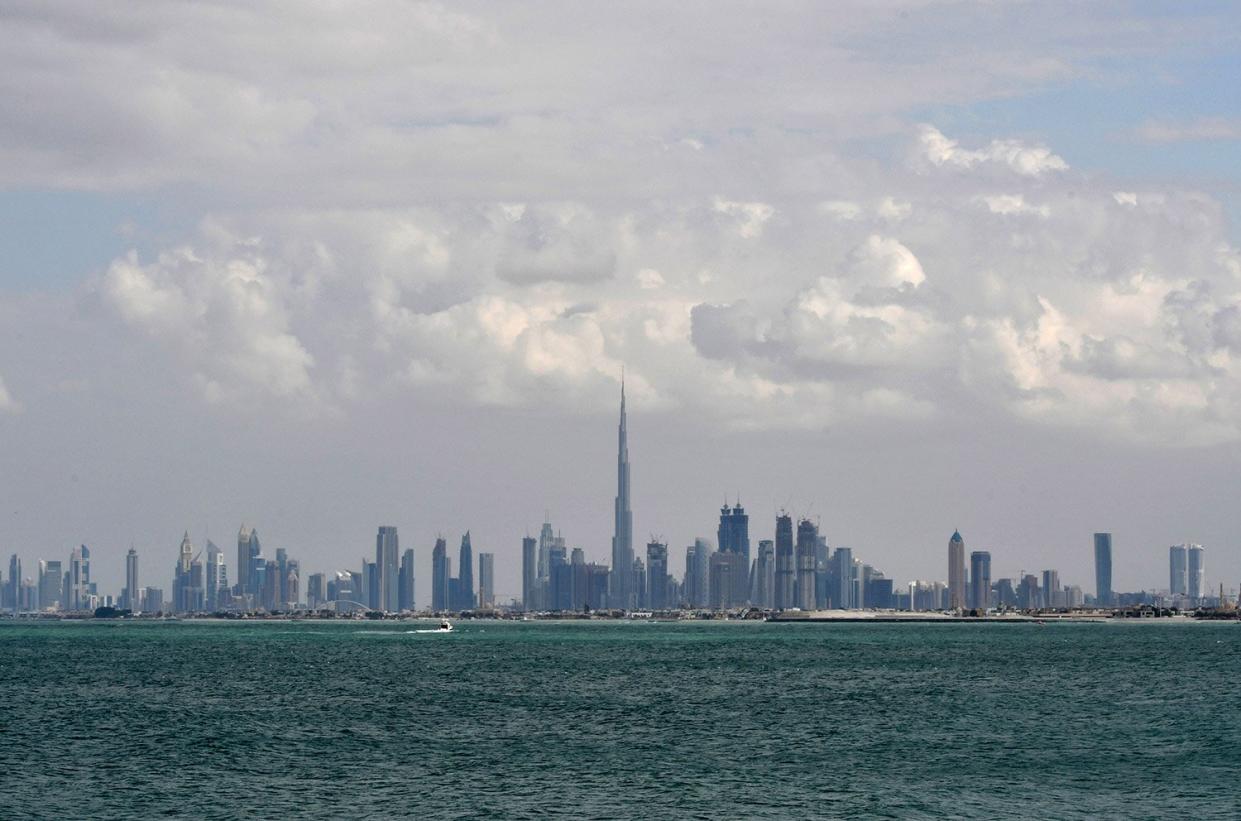Scientists Are Using Drones to Create Artificial Rainstorms in the Blazing Hot Middle East

GIUSEPPE CACACE/getty
Controlling the weather sounds like a power reserved for superheroes, but thanks to scientists, it is very much reality in the United Arab Emirates.
According to CBS News, the Middle Eastern country recently began using drones to create rainstorms over its cities, which regularly experience hot temperatures. UAE's National Center of Meteorology released a pair of Instagram videos this week showing heavy rain in the country, including in the Northern beach city of Ras al Khaimah. Typically, UAE only receives about four inches of rain a year, the outlet reported.
The rain-making technology — called "cloud-seeding" — works by blasting clouds with electrical charges, which forces them to drop rain, researchers explained in a May press release from the United Kingdom's University of Reading.
"... Understanding more about how rain forms, and with the potential to bring much-needed relief to arid regions, is an extraordinary scientific achievement," Reading professor Robert Van de Noort said in the statement.
RELATED: Over 60 People Die amid Heatwave in Oregon: 'A True Health Crisis,' Says County Official
"Of course, our ability to manipulate weather is puny compared to the forces of nature," he added. "We are mindful that we as a University have a big role to play, by working with global partners to understand and help prevent the worst effects of climate change."
While UAE does not have a lot of rain, it does have "plenty" of cloud coverage, making it a great place to test the technology, researchers told BBC in March. The team began tests near Dubai earlier this year, Keri Nicoll, an investigator on the project, explained to CNN.
Nicoll said the electrical charges help smaller water droplets merge with the bigger ones, creating even larger raindrops. This is important since smaller raindrops are likely to evaporate before they hit the ground due to the country's high temperatures.
"What we are trying to do is to make the droplets inside the clouds big enough so that when they fall out of the cloud, they survive down to the surface," she told CNN in May.
RELATED VIDEO: Golden Retriever Provides Emotional Support for Firefighters Battling California Wildfires
There is hope the technology can be an environmentally viable answer to water security, the outlet said.
But there is still debate about the process, and some researchers have expressed concerns about whether cloud-seeing in one area could take the rain away from somewhere else.
"There's still a long way to go to definitively see how effective cloud seeding weather modification is at enhancing rainfall," Nicoll told CNN.

